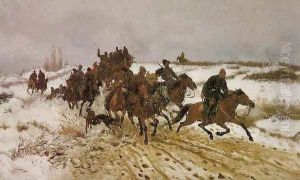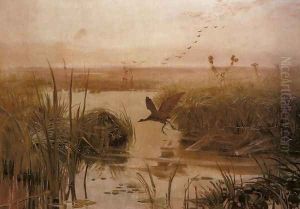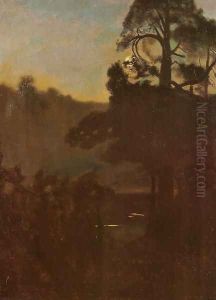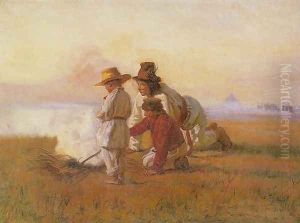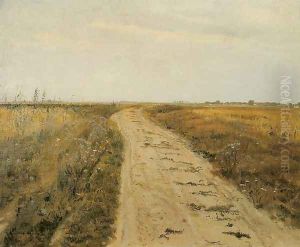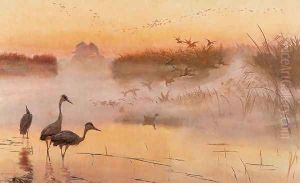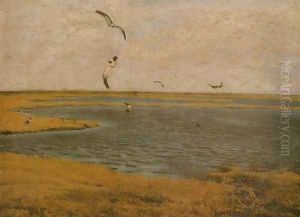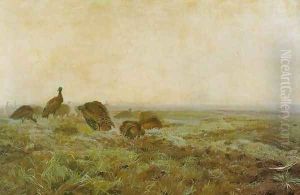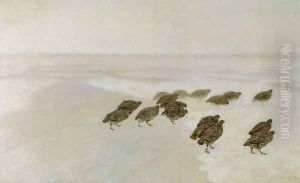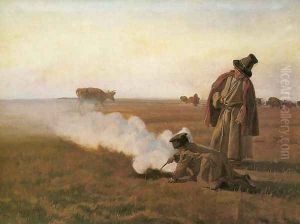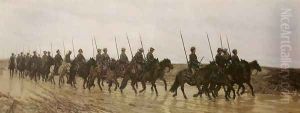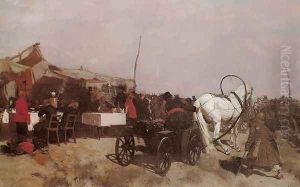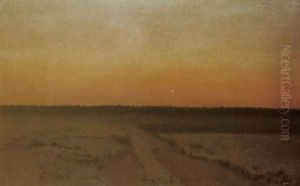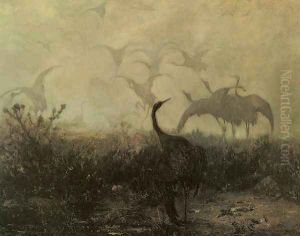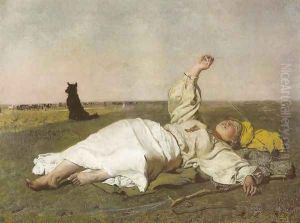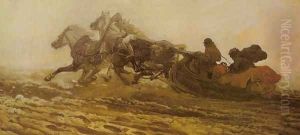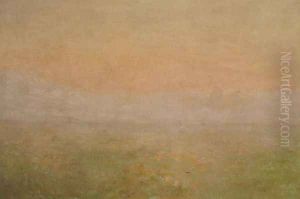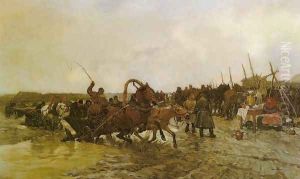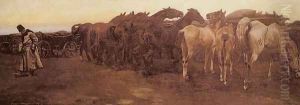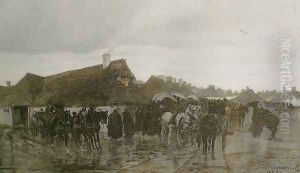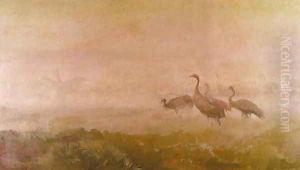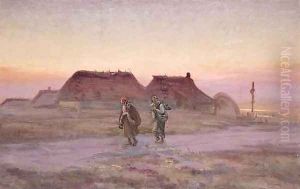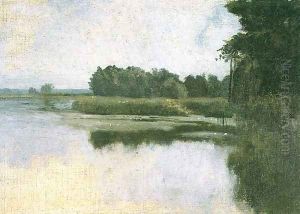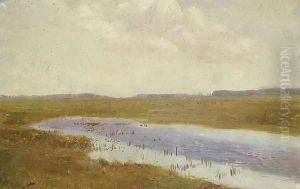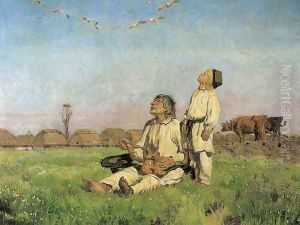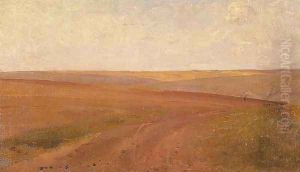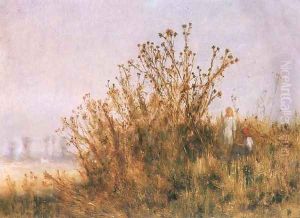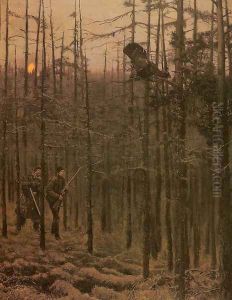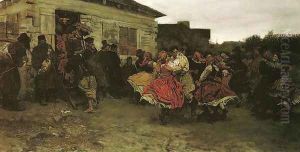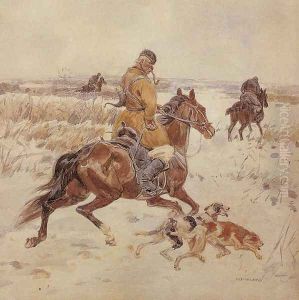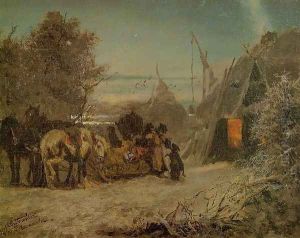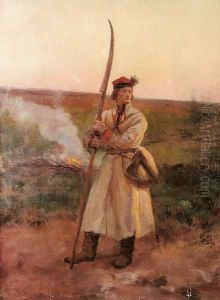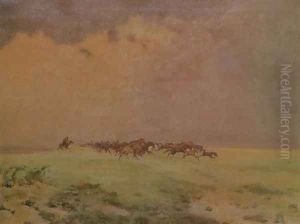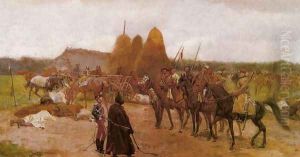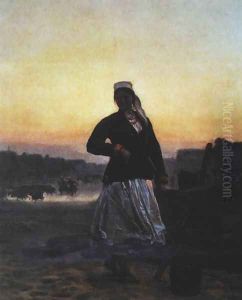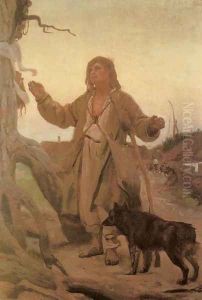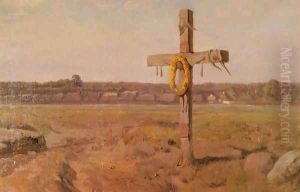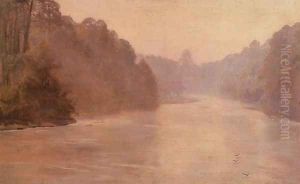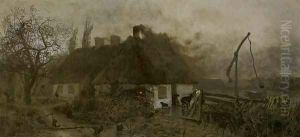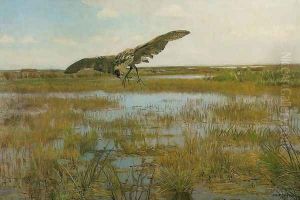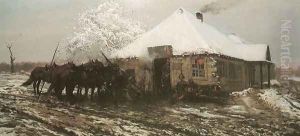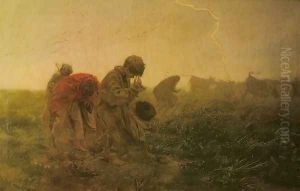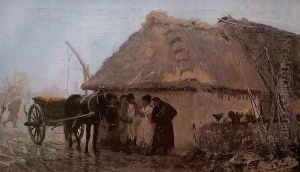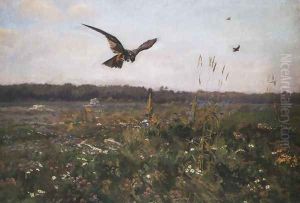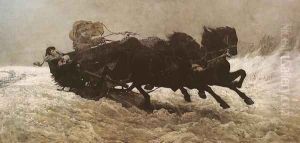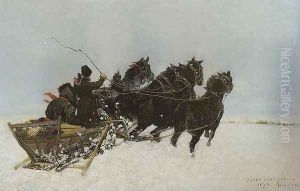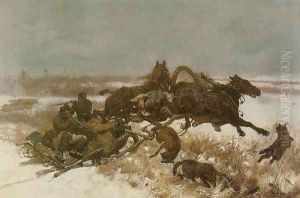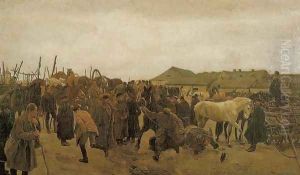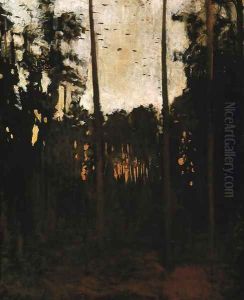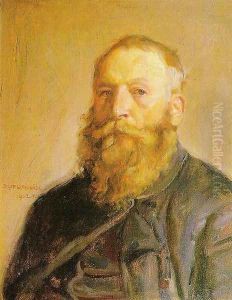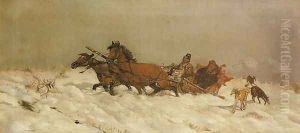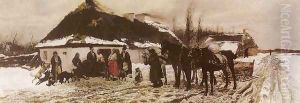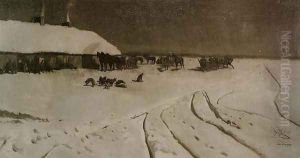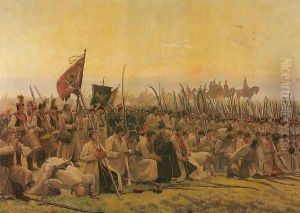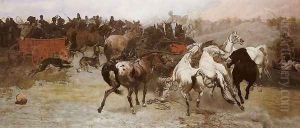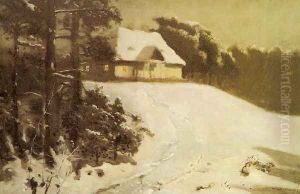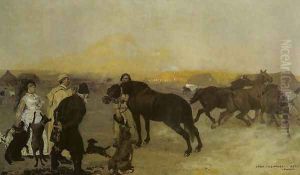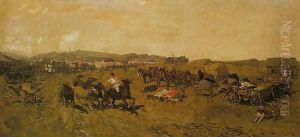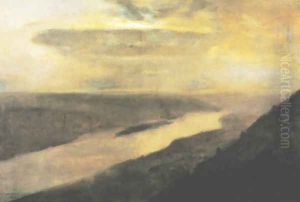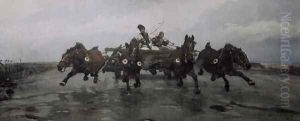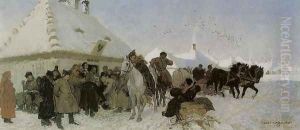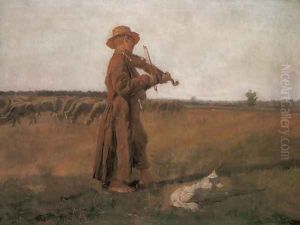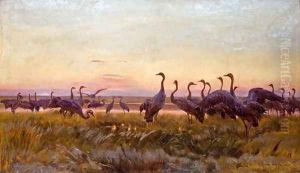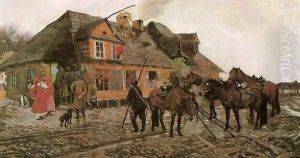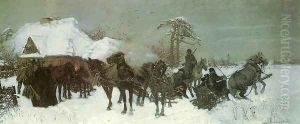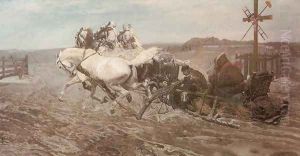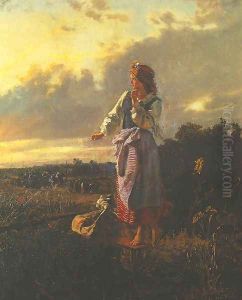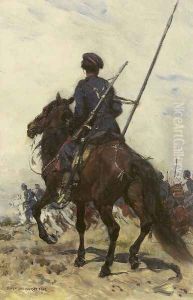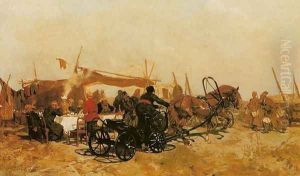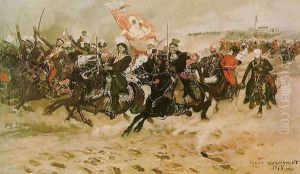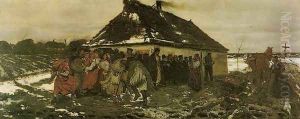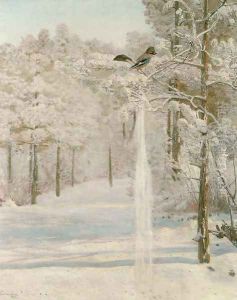Jozef Chelmonski Paintings
Jozef Chelmonski was a renowned Polish painter known for his realistic and atmospheric depictions of the country's rural life and landscapes. Born on November 7, 1849, in the village of Boczki near Lowicz in the Congress Kingdom of Poland, he was part of a nation that had been partitioned by its neighbors Russia, Prussia, and Austria. Despite the political turmoil of the era, Chelmonski managed to cultivate a deep connection to his homeland's natural beauty and peasant culture, themes that would dominate his artistic work.
Chelmonski began his formal artistic education at the Warsaw School of Drawing, which was crucial in shaping his early skills. He then continued his studies at the renowned Academy of Fine Arts in Munich, which was a popular destination for many Polish artists at the time. In Munich, he was influenced by the work of the realist painters, particularly those involved in the Munich School, which emphasized detail, naturalism, and a subdued palette.
After his studies, Chelmonski spent some time traveling and working throughout Europe, including a significant period in Paris, which was then the epicenter of the art world. Despite the prevailing trends of Impressionism in France, Chelmonski remained committed to the realist style. His work often featured dramatic lighting and a strong emphasis on mood, which set him apart from his contemporaries.
Chelmonski returned to Poland in 1887 and settled in the village of Kuklówka near Radziejowice, where he built a house and studio. The return to his homeland further strengthened his commitment to Polish subjects, particularly the landscapes and the peasants, which he portrayed with a combination of romanticism and realism. Some of his notable works include 'Four-in-Hand' (1881), which depicts a team of horses galloping through the snow, and 'Storks' (1900), which reflects his fascination with the Polish countryside.
Throughout his career, Chelmonski was recognized for his contributions to Polish art and was a member of various artistic societies. His paintings were exhibited widely, including at the Zacheta National Gallery of Art in Warsaw, and garnered him numerous accolades. Jozef Chelmonski's legacy as an artist is marked by his ability to capture the essence of Polish rural life, the emotional depth of his subjects, and his masterful handling of light and atmosphere.
Chelmonski passed away on March 6, 1914, in Kuklówka. Today, his works are considered national treasures and are held in high esteem by collectors and museums in Poland and abroad. They serve not only as beautiful examples of Polish art but also as historical records of a way of life that has since transformed. The enduring appeal of Chelmonski's paintings lies in their timeless quality and the universal themes of nature and human experience that they so vividly depict.
